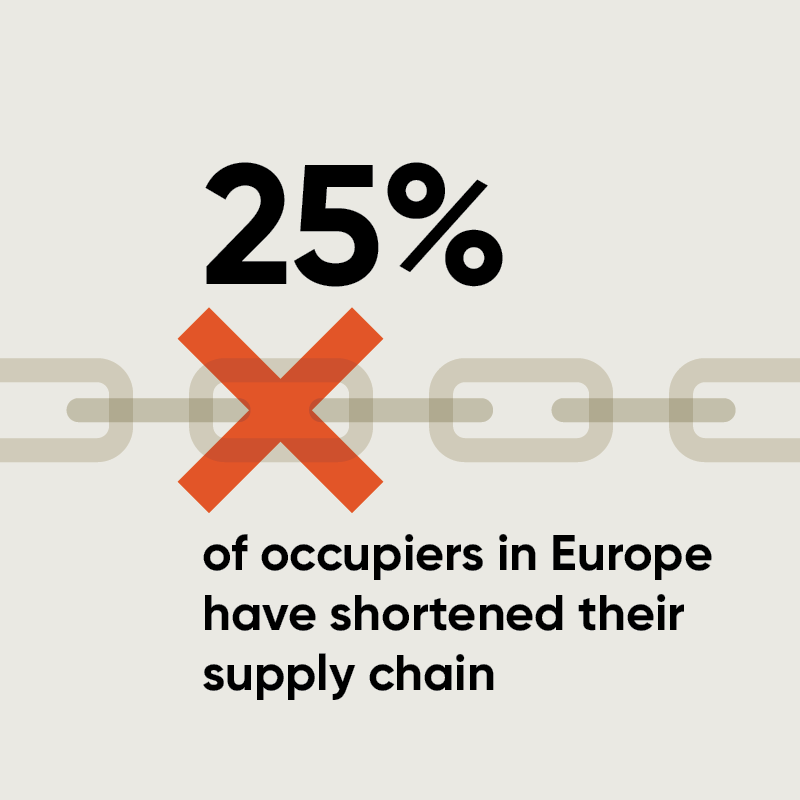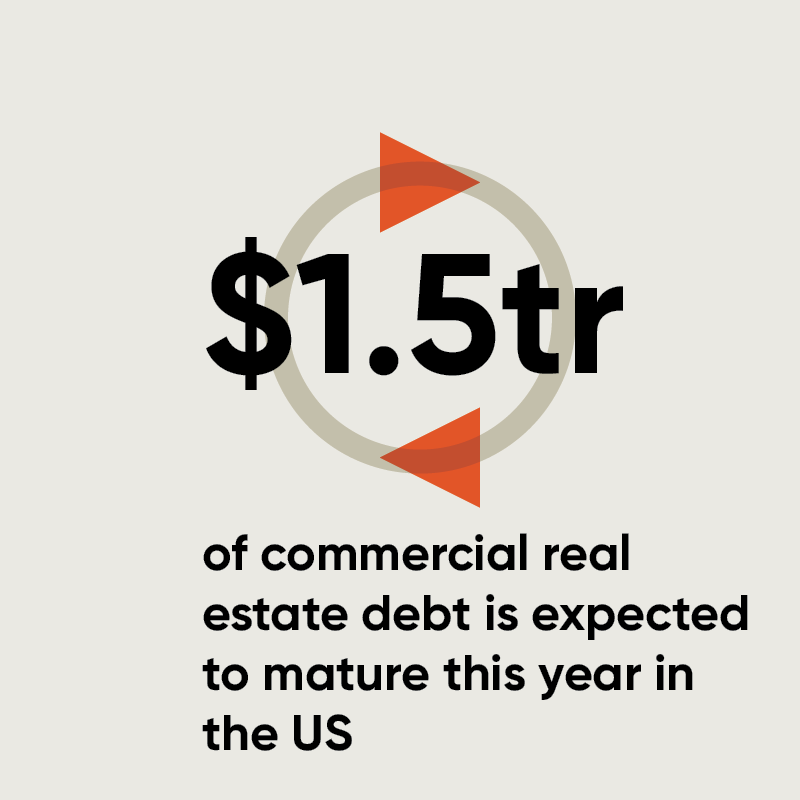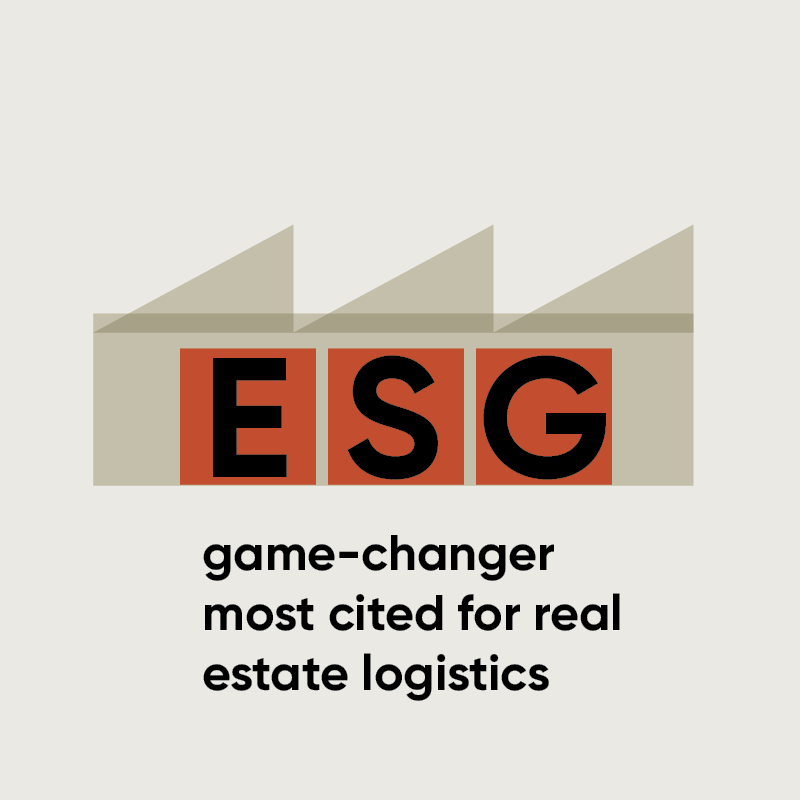Insights
Real estate logistics: The top four trends to watch in 2025
Real Perspectives
Feb 24, 2025The Industrial and Logistics sub-sector has been one of the darling’s of the real estate industry for many years now, but what are the likely transformative trends which could reshape this sector in 2025?
Refinancing opportunities, a stronger focus on environmental, social and governance (ESG) regulations and the rise of AI and automation are all heavily influencing investment strategies, development decisions and operational priorities.
Here’s how these developments are impacting logistics investors, developers and occupiers globally.



1. Geopolitical uncertainty is reshaping supply chains
In its 2025 Geopolitical Risk Dashboard, Blackrock predicts “change” elections, such as we’ve seen in major economies the past year, to become more frequent in a world of slower growth and more regular shocks—exacerbating geopolitical volatility.
From shifting trade alliances to regional instability, these risks have a profound impact on global capital flows. Companies are looking to secure logistics facilities closer to their core markets, reducing reliance on international routes susceptible to disruption. 25% of occupiers in Europe have shortened their supply chain in the past three years in response to risks of disruption, according to Savills.
But nearshoring isn’t just a response to geopolitical risk. These investments are also driven by the need to meet customer expectations for rapid deliveries. Almost half of shoppers abandon their online carts if shipping times are too long or aren’t provided, according to McKinsey. As a result, logistics real estate near urban centres will continue to attract capital. These properties represent a stable investment opportunity in an otherwise uncertain global environment.
2. Refinancing is creating unexpected opportunities
The refinancing wave presents a unique blend of challenges and opportunities for the real estate logistics sector. In the US alone, approximately $1.5 trillion of commercial real estate debt is expected to mature this year. Although this trend is more pronounced in the US, its ripple effects are being felt globally, including in the UK and Europe.
Over the past few years, many borrowers have taken an "extend and pretend" approach—negotiating short-term extensions to loans instead of addressing underlying financing issues. This strategy involves extending loan terms and hoping market conditions improve, rather than making immediate changes. As these extensions expire, property owners will face mounting pressure to refinance, often needing to inject additional equity or restructure loan-to-value ratios to secure favourable terms. For investors, this presents opportunities to acquire distressed assets or negotiate attractive financing deals.
3. ESG is an evolving priority in Europe
ESG considerations are becoming a cornerstone of European investment strategies in real estate logistics. From pension funds to private equity firms, investors are demanding robust ESG credentials as a prerequisite for capital allocation.
When Savills asked European logistics occupiers what was on the horizon that could be “game-changing” for their logistics real estate, the most cited issue was “more stringent ESG targets/regulations”. EU regulations are evolving rapidly, with more regulations on the horizon, and this is having significant impacts on occupiers’ real estate requirements.
The focus on ESG is multi-faceted. On the environmental side, the push for greener buildings is driving investment in energy-efficient and sustainable logistics facilities. For older properties, owners face the challenge of retrofitting and upgrading to meet stricter regulatory standards. Without these updates, assets risk becoming obsolete. Green financing options, such as loans tied to sustainability metrics, offer financial incentives for ESG-compliant projects, accelerating this trend.
Social and governance considerations are equally important. Community engagement initiatives, such as partnering with local organisations to support job creation and training programmes, are becoming more common. Governance frameworks that promote transparent decision-making and ethical business practices are also gaining traction, ensuring that stakeholders across the value chain are aligned with ESG goals.
This is impacting different stakeholders in a multitude of ways. Tenants are seeking buildings with energy efficiency certifications to reduce operational costs. Investors are prioritising assets that meet ESG criteria to align with their sustainability mandates. And policymakers are introducing incentives and penalties to drive compliance with evolving regulations.
4. AI and Automation
Along with the sustainability agenda, another notable consideration is AI and the rise of automation. Although the use of AI is relatively new in the sector and it may take some time before it is truly revolutionary, its impact on efficiency shouldn’t be underestimated and investors, financiers, occupiers and end users that don’t stay up to date on developments in this area, do so at their peril.
Transforming through uncertainty
Despite the uncertain landscape, 2025 is shaping up to be an exciting year for the industrial and logistics sector. Underpinned by the enduring demand for e-commerce and efficient supply chain infrastructure, the sector remains resilient and attractive to investors globally. But success in this space will demand a strategic approach, balancing immediate opportunities with long-term sustainability and resilience.
By staying ahead of these trends, logistics investors, developers and occupiers can position themselves to capitalise on growth while managing risks and maintaining a competitive edge.
Related Practice Areas
-
Logistics & Industrial
-
Sustainable Real Estate
-
ESG Governance, Compliance & Reporting



